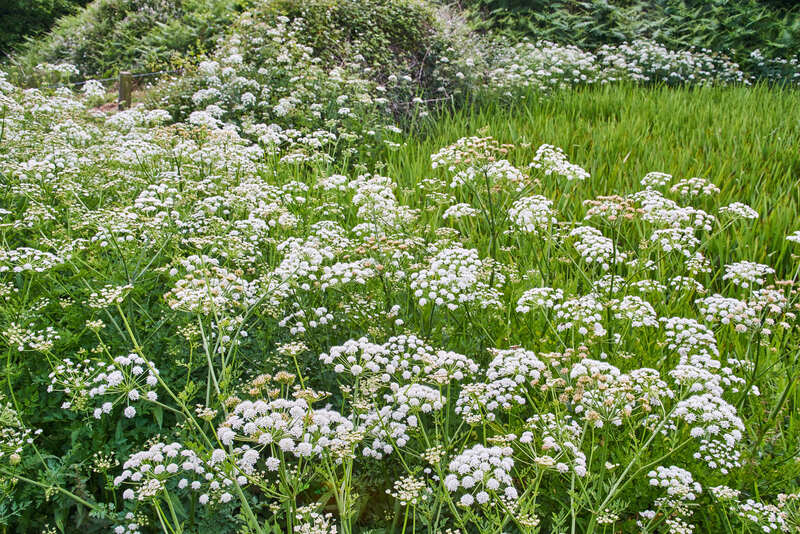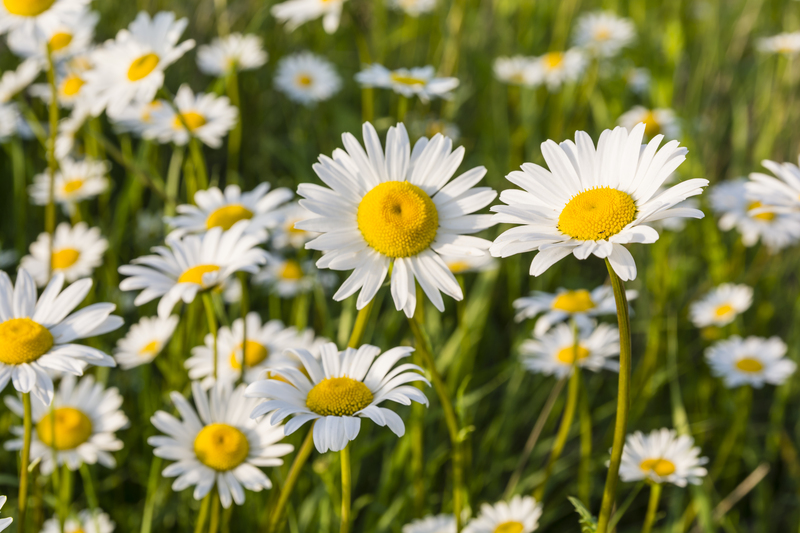Learn How to Keep Garden Plants Cozy in Cold Months
Posted on 22/08/2025
Learn How to Keep Garden Plants Cozy in Cold Months: The Ultimate Guide
As winter approaches and temperatures drop, many garden enthusiasts wonder how to keep garden plants cozy in cold months. Losing precious greenery to frost and chilly winds can be heart-wrenching, but with the right preparation and knowledge, you can safeguard your outdoor oasis and ensure your plants thrive even through winter's toughest spells. This comprehensive article explores proven strategies and expert tips to protect your garden plants during cold weather. Whether you're a beginner or a seasoned green thumb, you'll find practical and sustainable solutions here.

Why Cold Weather Poses a Challenge to Garden Plants
Cold weather can be stressful for many plants, especially those that aren't adapted to freezing temperatures. Frost can cause cellular damage, while fluctuating temperatures often disrupt plant growth cycles. Understanding the risks helps you plan better and ensure your beloved plants remain safe and comfortable.
- Freezing temperatures can burst plant cells, leading to brown, limp leaves.
- Hard frosts may kill sensitive annuals and weaken perennials.
- Dormancy in many plants slows their defenses, leaving them more vulnerable.
- Reduced sunlight hinders photosynthesis and general plant health.
How to Prepare Your Garden for Winter
Preparation is key to winter-proofing your garden. Taking proactive measures in autumn or early winter gives plants the best chance for survival and a vibrant comeback in spring.
1. Choose Hardy Plants for Your Garden
While not always possible, started with hardy plant varieties ensures greater winter resilience. Researching and planting species suited to your hardiness zone reduces the need for intensive winter protection.
- Consult USDA Hardiness Zone maps when selecting new plants.
- Opt for native plants; they're already adapted to local climate swings.
2. Shield Delicate Garden Plants from Frost
Delicate plants require extra attention. Use the following strategies to protect garden plants from frost:
- Mulch generously: Layer 2-4 inches of straw, leaves, or wood chips around root zones for insulation.
- Cover overnight: Drape frost cloth, burlap, or even old bedsheets over tender plants before dusk.
- Remove covers during the day so plants receive sunlight and moisture escapes.
3. Water Wisely Before a Freeze
Surprisingly, plants better withstand cold spells if the soil is moist (not soggy). Moist ground retains more warmth. Water early in the day before a frost is forecasted, ensuring roots have time to absorb moisture.
4. Avoid Overfeeding Before Winter
Fertilizing late in the season encourages new, tender growth, which is highly susceptible to cold damage. Cease feeding a month before your area's expected first frost.
Innovative Tips for Keeping Garden Plants Warm in Winter
Beyond classic methods, several innovative and sustainable practices help create a cozy environment for garden plants in cold months.
1. Winter Cloches and Cold Frames
Cloches, whether glass domes or DIY plastic bottles, act like mini-greenhouses, trapping warm air around smaller plants. Cold frames--a bottomless box with a glass or plastic lid--allow you to cultivate cool-season vegetables well into winter.
- Use clear plastic or old windows to construct budget-friendly cold frames.
- Vent cold frames on sunny days to prevent overheating and moisture buildup.
2. Build Windbreaks and Protective Barriers
Chilly winter winds can dry out and freeze plants faster. Creating natural or artificial windbreaks offers vital protection.
- Plant dense evergreens, like juniper or arborvitae, along the garden's windward side.
- Install temporary fencing or burlap screens to safeguard beds of vulnerable plants.
3. Mulching: The Best Winter Blanket for Your Plants
Mulch isn't just for summer. In winter, it acts as an insulating blanket, moderating soil temperature and preventing freeze-thaw cycles that can heave plants out of the ground.
- Straw, pine needles, and shredded bark are excellent natural insulators.
- Apply mulch late in autumn--after the first hard frost to keep soil cold and prevent premature growth.
- Leave space around the plant's crown to prevent rot.
4. Utilizing Row Covers and Floating Fabric
Lightweight floating row covers come in a range of thicknesses. These versatile fabrics shield entire rows or beds from frost while allowing sunlight and rain to pass through.
- Secure edges with soil or stakes for optimal wind protection.
- Remove during warmer spells to prevent overheating.
5. Bring Container Plants Indoors
Potted plants and tender tropicals are especially vulnerable to cold damage. Move them to a sheltered spot if possible. Consider these options:
- Sunny window sills or enclosed porches provide light and warmth.
- Unheated garages or basements offer frost protection for dormant plants.
- Elevate containers on bricks to prevent direct contact with freezing ground.
Eco-Friendly Ways to Keep Garden Plants Cozy in Cold Months
Sustainability in winter gardening is about using natural, reusable, and minimal-impact resources to protect your garden plants during cold months. Consider these eco-conscious practices:
- Compost as mulch: Use unfinished, chunky compost to insulate beds while enriching soil for spring.
- Cardboard and newspapers: Lay layers between rows as a biodegradable and effective insulator.
- Upcycle and reuse: Save old sheets, bubble wrap, and even pool noodles as plant protection gear.
Common Mistakes to Avoid When Protecting Garden Plants in Winter
Even well-meaning gardeners can inadvertently cause harm if not careful. Avoid these frequent errors when you aim to keep your garden cozy during cold weather:
- Using plastic covers carelessly: Direct plastic can trap moisture and "steam" plants or freeze them if in contact. Always use fabric or create a buffer.
- Leaving covers on too long: Depriving plants of fresh air and sunlight fosters disease.
- Overwatering in winter: Soggy soil can freeze, damaging roots and inviting rot.
- Neglecting to label perennials: It's easy to forget where dormant bulbs and roots are buried, increasing risk of accidental disturbance.
What Are the Best Cold-Tolerant Plants for Winter Gardens?
Not all plants dread winter! Some actually shine in chilly conditions. Including cold-hardy species in your landscape ensures beauty all year and less intensive winter care.
- Evergreens (Holly, Boxwood, Pine): Add color and structure even under snow.
- Winter-blooming perennials (Hellebores, Snowdrops): Flower in late winter when little else is awake.
- Kale, Cabbage, Broccoli: These cool-season veggies tolerate light freezes and sweeten after frost.
- Ornamental grasses: Their seed heads catch frost beautifully.
How to Revive and Care for Damaged Plants After Frost
Despite best efforts, some plants may suffer winter injury. Here's how to help them bounce back:
- Don't prune too soon: Wait until spring to cut back frost-bitten stems, as they can still protect living tissue below.
- Be patient -- plants often recover slowly in early spring.
- Water deeply once the ground thaws to restore moisture lost to winter winds.

Frequently Asked Questions: Keeping Garden Plants Cozy in Cold Weather
How can I tell if my plants need extra winter protection?
Look up your plant species and your local frost dates. New plantings, subtropical species, and potted or shallow-rooted plants tend to need the most protection.
Is it worth investing in garden heaters or heat lamps?
For rare or delicate plants, garden heaters and heat lamps may be justified. However, most gardeners achieve success with passive methods (mulch, covers, windbreaks) that use less energy and are more eco-friendly.
Can I start seeds outdoors in winter?
Yes! Techniques like winter sowing--where seeds are started in covered containers outdoors--can give you a head start in spring, especially for hardy annuals and perennials.
Conclusion: A Cozy Winter Garden Is Within Reach
The cold months may challenge your garden, but with awareness and the proper techniques, it's surprisingly simple to keep garden plants cozy in cold months. From clever insulating mulch and windbreaks to DIY cold frames and careful water management, every effort yields lush rewards come spring. Stay proactive, experiment with protective methods, and enjoy a healthy, vibrant winter garden year after year!
Now that you've learned how to keep your garden plants warm and healthy during the chilly season, put these tips into practice and embrace the beauty of winter gardening!

